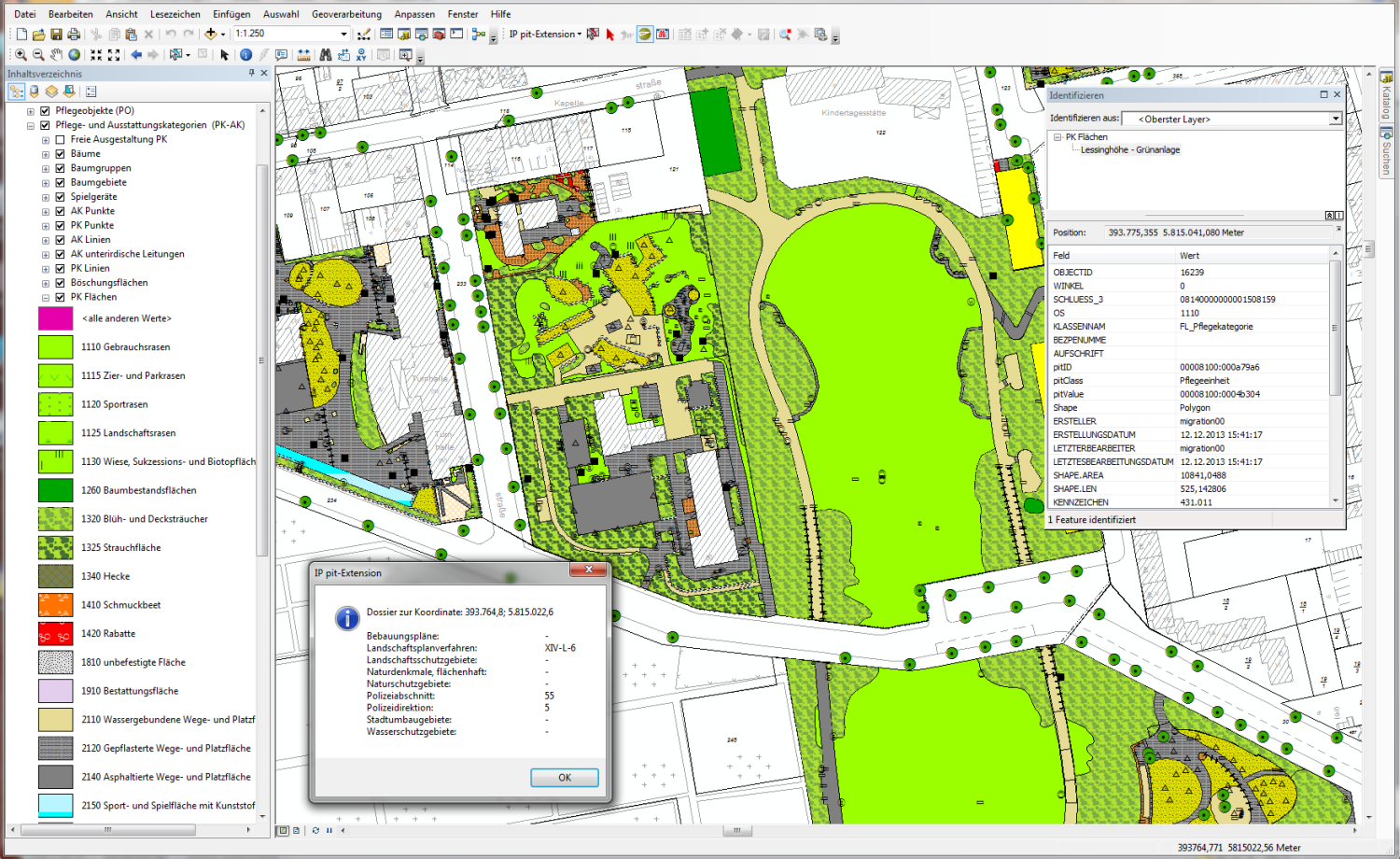The Green-Space Information System (GRIS) is an EDP procedure of the borough departments of green spaces and the Senate Department for Urban Mobility, Transport, Climate Action and the Environment (SenMVKU), Commission Open-Space Planning and Urban Green Spaces.
The Berlin GRIS consists of four modules:
- Database (in German), (specialized data base on green spaces, trees and playground land registers, calculation of care expenditures);
- GIS (in German), (Geographic information system GIS);
- Stock Statistics (in German), (standard evaluations) and
- Internet/Intranet Information (in German).
The GRIS is on the one hand designed to make the control of green-space care and maintenance more effective from a business-management point of view, and on the other, it simplifies information processing for planning and information purposes within the Berlin administration and to the public.
The development of the Berlin GRIS began with the introduction of GAIA at beginning of the ’90s. The development of the GIS shell YADE GBKat at the end of the ’90s, and in 2001, the extensive expansion of the Urban Green Spaces Internet presence enabled the Internet/Intranet Information module to be introduced. In 2014 the GRIS Berlin has been designed completely new. The new GRIS-Modules are the Database “pit-Kommunal” and an ESRI-based GIS (includs the WEB-GIS “MapSolution”).
Currently, the GRIS Intranet Information module is being expanded with the aid of modern browser-supporting WEB technology to include a digital picture data base and an extensive selection at standard evaluations on the stock of Berlin green spaces.
The substantive development of the Berlin GRIS concept has been carried out via expert advice from various issue-based teams with representatives of the Senate Department for the Environment, Urban Mobility, Consumer Protection and Climate Action (now: Senate Department for Urban Mobility, Transport, Climate Action and the Environment), Commission III C, Open-Space Planning and Urban Green Spaces and the borough departments of green spaces.
Those concerned with these issues can obtain additional information on the functionality and structure of the four modules of the Berlin Green-Space Information System on the following pages.

